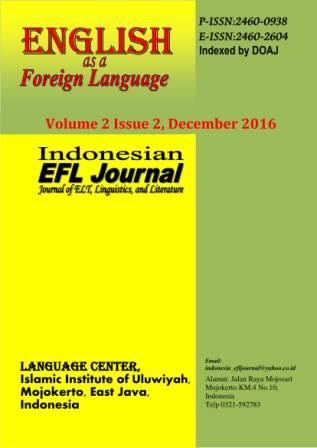English Translation of Javanese Cultural Pieces in “Ronggeng Dhukuh Paruk†Novel
Abstract
Translating cultural pieces is always challenging since it usually involves a task of presenting something unknown to the target readers. This case is seen in the translation of Ronggeng Dhukuh Paruk novel which has been translated in many languages, one of them is English. It is full of Javanese cultural pieces but it was written in Bahasa Indonesia. Later, it was translated (or rewrite) into Javanese—like coming back to its own language habitat. The objective of the paper is to identify the strategies applied to translate the cultural meaning. The data sources are the three-language versions of the novel, in Indonesia, Javanese and English. The analysis on the data revealed that there are many various cultural meanings in the text: ecological facts, social and cultural concept, the cultural products in things, religion, and linguistic features of the culture. The strategies used to translate the cultural meaning are descriptive (badhongan – leave garland), calque (bukak klambu), borrowing (dadap, seling, kathik), and borrowing with description (kamitua-respected leader). The procedure taken in translating cultural pieces considers some factor: the importance of the meaning for the narration, its foreign level, the importance of its exotics sense in the literary work, and the interest to present local nuances to the target readers.
References
Hatim, B., & Munday, J. (2004). Translation: an Advanced Resource Book. Oxford: Routledge
Hervey, S.G.J., & Higgins, I.(1992). Thinking Translation: A Course in Translation Method, French-English. New York: Taylor & Francis Routledge.
Manfredi, M. (2008). Translating Text and Context:translation Studies and
Systemic Ffunctional Linguistics. Bologna: CLUEB
Newmark, P. (1988). A Textbook of Translation. New York: Longman Pearson Education.
Nord, C. (1997). Translation as Purposeful Activity. London: St. Jerome
Copyright (c) 2016 Indonesian EFL Journal: Journal of ELT, Lingusitics, and Literature

This work is licensed under a Creative Commons Attribution-ShareAlike 4.0 International License.
All rights reserved.
this publication may be reproduced, stored in a retrieval system, or transmitted
in any form or by any means, electronic, mechanical, photocopying, recording.




